So… I’ve been itching to write this down since I returned from Taiwan because it remains one of the most memorable parts of my trip.
Booking train tickets across different counties in Taiwan wasn’t the easiest task. My partner, Eugene, and I had to first familiarise ourselves with the different rail systems, understand the various ticket classes, compare ride durations and prices, and figure out which stations to stop at. Just typing that out feels exhausting — but I’m glad to say that after our 14-day trip, we’ve become pretty confident with Taiwan’s railway system.
In fact, we ended up trying all three types of rail transport, which turned out to be the most rewarding decision of our trip.
Why we decided to travel Taiwan by train

Triumphant and happy because we were reaching Hualien, with a lunch bento in hand
Originally, we had planned to hire a private driver for all 14 days of our trip. Unfortunately, poor planning meant that most drivers were already booked out — and the few who were available quoted us astronomical prices. One driver, for instance, asked for NT$7,000 (~S$333 at the time) just for a one-way three-hour drive from Taichung to Hualien.
That was the moment we decided it was fate: we had to conquer Taiwan by train. Of course, this also meant facing our fear of deciphering traditional Chinese characters at train stations. But in hindsight, it turned out to be one of the best travel decisions we made.
If you want to experience Taiwan like the locals do, read on to discover why taking the train is actually affordable, convenient, and far less intimidating than it first seems.
But first, here’s a funny story…
Let me tell you a side story about the time when the train engine died halfway through our five-hour journey on Christmas Eve:

Us after boarding that fateful train on 24 Dec 2017 & gearing up for a five-hour ride
Before I dive into the details, here’s a little side story about our five-hour TRA ride from Taichung to Hualien on Christmas Eve.
Somewhere at Zhongli station, the train engine suddenly died. I woke up from a nap to hear locals complaining in Hokkien. It was 10°C outside, the lights were out, and there were no announcements since the electricity was cut. Before we knew it, everyone started clambering off the train with their suitcases, leaving only Eugene and me behind.
Eventually, we followed the crowd onto the platform where a rickety-looking transfer train (known as a 區間車, or Qūjiānchē) had pulled up. Locals explained that it was heading to Taipei — but it was already jam-packed, with people squeezed on the steps. To make things worse, we would have had to buy new tickets and try to secure refunds for the ones we already had.
In the end, we didn’t board. And just as well — minutes later, our original train roared back to life. The lights came on, and we gratefully re-boarded with a huge sigh of relief. That’s how we made it safely to Hualien, where accommodation and a hiking guide were already waiting for us.
There are three types of rail transport in Taiwan, which I have summarised below:
1. MRT (Taipei Metro)
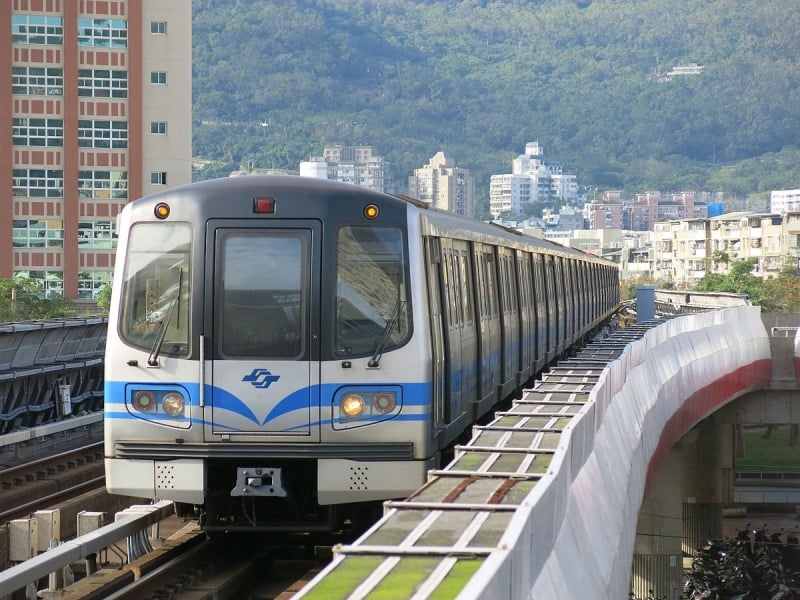
Image credit: subscriptshoe9
Taipei’s MRT is straightforward and similar to Singapore’s system. Simply purchase an EasyCard (悠遊卡 / yōuyóu kǎ) at any station, top it up, and tap in and out as you would with an EZ-Link card.
Each ride usually costs NT$20–30 (~S$0.90–S$1.50) for about 4–5 stops. Station names are also displayed in English, so navigating the MRT is stress-free.
2. THSR aka Taiwan High Speed Rail (高铁)

Image credit: Taiwan Tourism
The THSR is ideal for travelling between major cities such as Taipei, Taichung (for Sun Moon Lake), Chiayi (for Alishan), and Kaohsiung. We took the HSR from Taipei to Taichung straight after landing at Taoyuan International Airport — a swift one-hour ride that cost just NT$660 (~S$31).
Some things to note about THSR:
-
You can book tickets online up to one month in advance, and there are often early-bird discounts.
-
Tickets can be collected from self-service kiosks or counters at the station, as well as at FamilyMart or 7-11 (collection fee: NT$8).
-
Eating bentos on the train is a must-try experience, and yes — there are clean toilets onboard.
3. TRA aka Taiwan Railway Administration (火車 or 台铁)
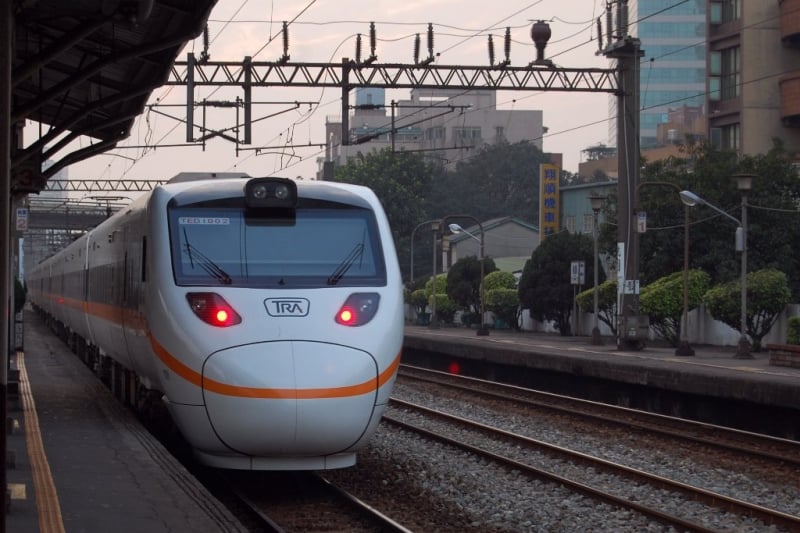
Image credit: Lexcie
The TRA network covers the entire island and is the go-to option for scenic routes, especially if you’re heading to Hualien (Taroko Gorge, scallion pancakes) or Jiufen/Shifen (sky lanterns, old streets).
For example, we took the TRA from Taichung to Hualien (NT$815, ~S$38) and back to Taipei (NT$420, ~S$19.80). Unlike Taipei Main Station, which houses both TRA and HSR in the same complex, Taichung’s TRA and HSR stations are at different addresses — so don’t mix them up!
Inside, expect coastal views, modern Puyuma trains (for reserved express rides), and the quintessential railway bentos.
Things to note about TRA:
-
Book online for reserved seating. Express trains (Taroko or Puyuma under TzeChiang Express) are the most comfortable and efficient.
-
Tickets open 14–16 days in advance — book quickly, as popular routes sell out within hours.
-
Ticket collection works the same way as THSR: at stations, 7-11, or FamilyMart.
-
EasyCards are accepted, but they don’t allow seat reservations, so for longer journeys, online booking is highly recommended.
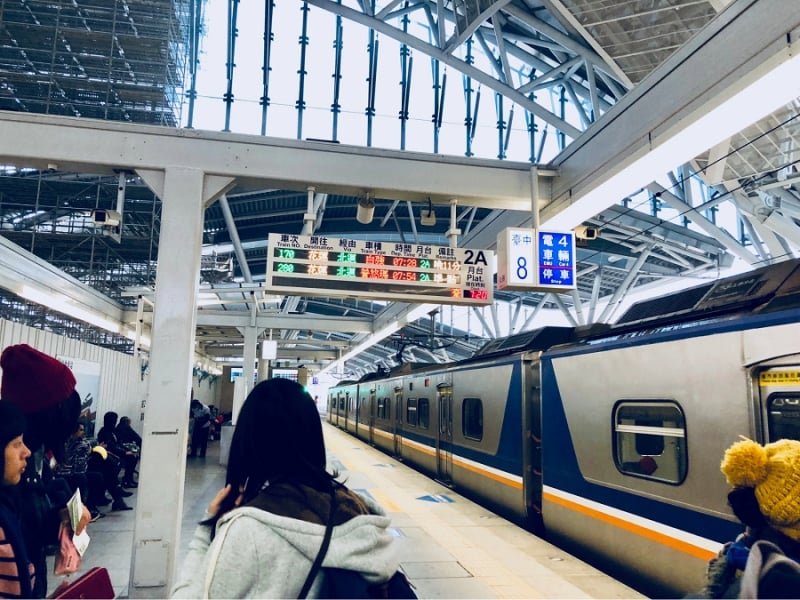
This is the view from the platform of the Taichung TRA Station, and that is a TRA train. Note that it is NOT the same address as the Taichung HSR station, don’t go to the wrong station type and miss your train! This is unlike in Taipei, where the TRA and HSR stations are all in the same mega building called Taipei Main Station (台北車站).
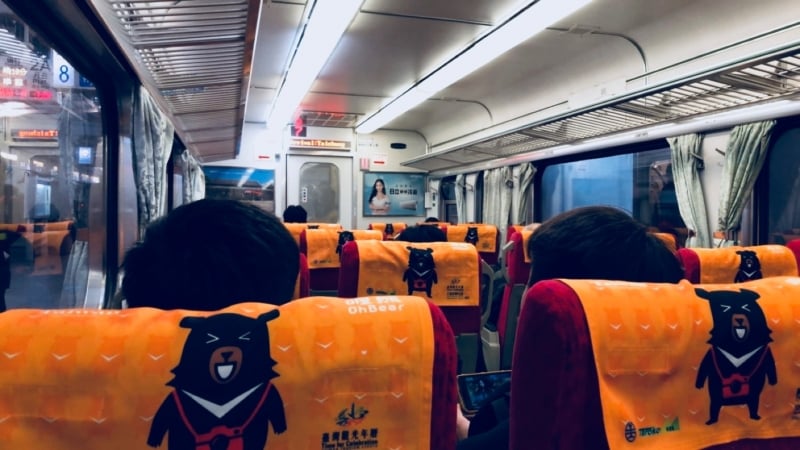
Inside the train
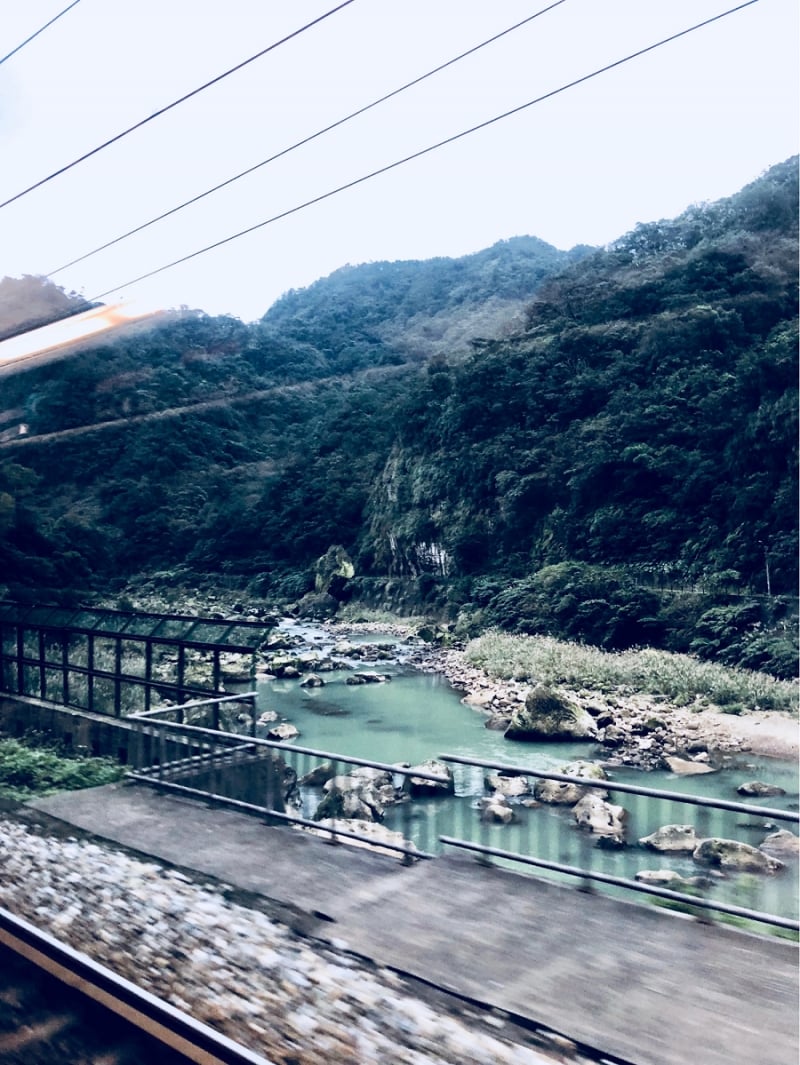
Some random serene stream I spotted when I was briefly awake. Your ride will be peppered with tons of nice views like these, especially along the coastline!

The Puyuma train we took from Hualien back to Taipei – the most modern type!
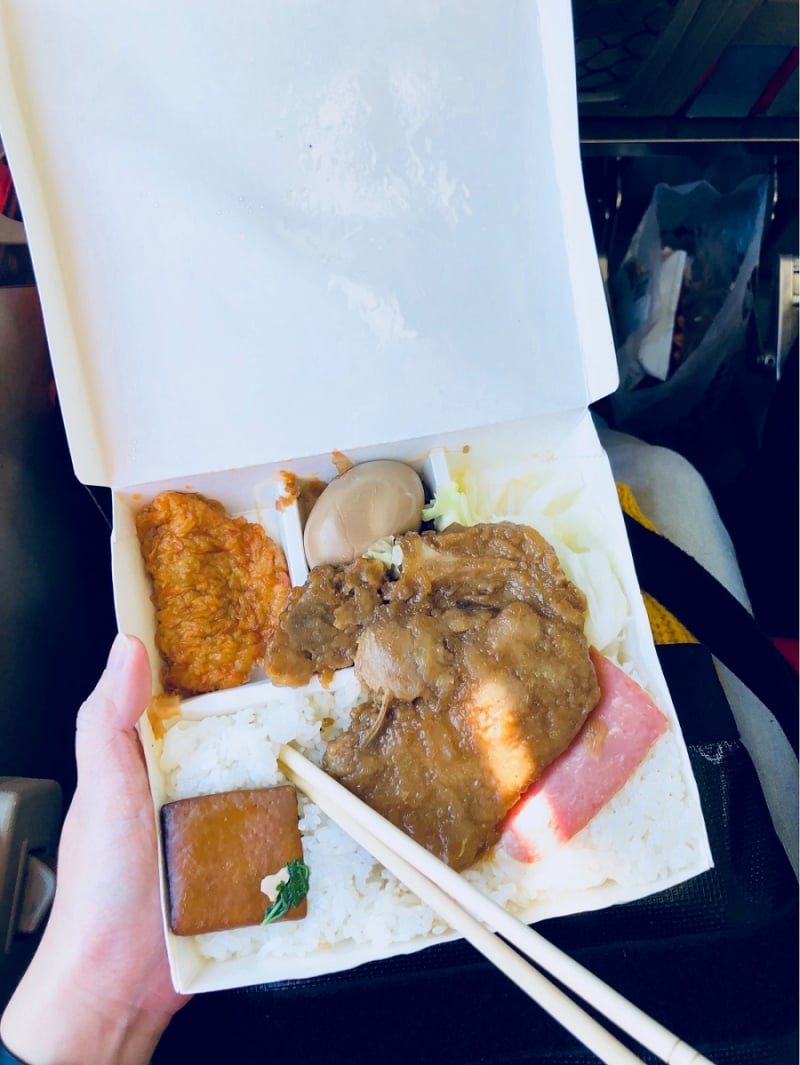
The quintessential train bento aka 鐵路便當 that they sell on all HSR and TRA trains, usually consisting of a braised egg, a pork cutlet, beancurd and some braised cabbage. This one even had ham and a beancurd skin roll!
Looking back, travelling around Taiwan by train wasn’t as daunting as we first thought. In fact, it turned out to be one of the highlights of our trip. The trains are punctual, reliable, and surprisingly easy to navigate.
And if you ever run into hiccups like we did at Zhongli, just ask for help — Taiwanese people are some of the friendliest you’ll meet. Hopefully, this little guide helps you feel more confident about exploring Taiwan’s railway system for yourself!
Contributed by Bell Yeo




